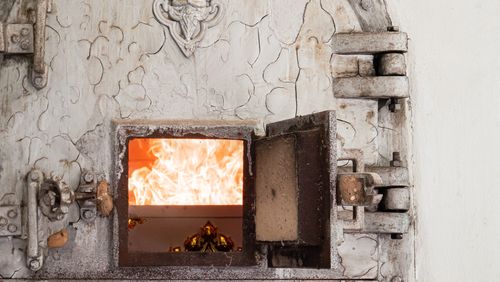 Buddhist funeral customs vary from region to region and sect to sect. However, there are a few common themes throughout: good deeds, reincarnation, enlightenment, and the belief that death is a part of saṃsāra — the natural cycle of life.
Buddhist funeral customs vary from region to region and sect to sect. However, there are a few common themes throughout: good deeds, reincarnation, enlightenment, and the belief that death is a part of saṃsāra — the natural cycle of life.
Saṃsāra
To Buddhists, the cycle of life is held sacred; it includes death and reincarnation. You’re born into this life, learn the lessons you need to learn to move you closer to bodhi (enlightenment), die, and are reincarnated into a new life, where you’ll learn new lessons.
When Buddhists have learned enough to quell the three poisons of raga, dvesha, and moha — greed, aversion, and ignorance — they escape the cycle of life and attain nirvana, the ultimate goal of most sects of Buddhism.
Reincarnation
Buddhists also believe in karma and that what they do in this life, for good or evil, will be paid upon them in their next life. Friends and family may commit good deeds on behalf of the deceased to merit them in their reincarnated state.
There are six realms of reincarnation, based on how someone lived their life:
- Gods — for the power-hungry who don’t have compassion
- Demi-gods — for the strong who are impatient and angry
- Humans — the only realm from which nirvana can be achieved
- Animals — for the ignorant and stupid who don’t want to change
- Hungry Ghosts — for the addictive, the compulsive, and the obsessive
- Hell — for those with evil karma, which can run its course and allow for another reincarnation
Death Customs
Once Buddhists have died, their bodies can’t be moved for at least four hours, since it takes some time for the soul to leave the body. The body is washed, dressed in everyday clothes, and kept cold.
Many Buddhists hold a wake so mourners can offer condolences to the family of the deceased. In front of the casket, there will be a photo of the deceased, which forms the basis for the altar. The altar may be decorated with fruit, flowers, and candles. Incense is burned on the altar, and an image of Buddha is present.
Ancient Buddhist funeral customs involved exposing the body to the elements, in either the woods, a cave, or water, so that the body became part of the life cycle of other animals. The remains would then be collected and either buried, cremated then buried, or cremated and scattered where the body had been.
Many Buddhists favor cremation, but some may choose to embalm and bury. Buddhists believe in organ donation and autopsies, but beyond that, the body is an empty vessel whose soul is reincarnated.
On the morning of the cremation day, the family holds the funeral. Monks are sometimes invited to conduct the ceremony, but the family can also do it themselves. They chant verses or sing appropriate sutras — prayers. A sermon may be said, and people may give eulogies.
If a monk conducts the ceremony, the family will offer cloth to the monk, symbolizing the discarded rags that monks wore during the time of Buddha. The merit of that good deed is then transferred to the deceased by the family pouring water into an overflowing cup.
The family of the deceased walk with sticks to show that they need support during their time of grief. They dress in white, while the rest of the mourners wear black.
After the funeral, the family follows the casket to the crematorium and watches the cremation. They then gather the ashes to be scattered according to the wishes of the deceased.
Buddhist funerals vary according to the background of the deceased and what Buddhist traditions he or she followed. These simple but meaningful rites allow the family and friends to wish their loved one well in their next life.